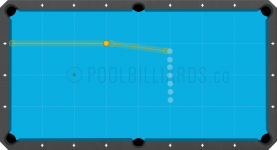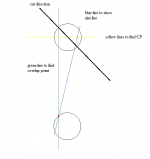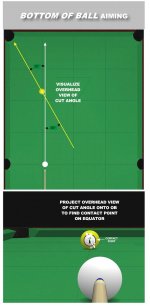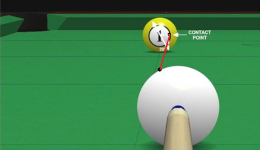OK, so I guess "align it to the contact point" means "align it to a point that's a learned distance from the contact point" (not "align it directly at the contact point")...?
pj
chgo
Yes, that's a good distinction. I don't try to see the contact point. I keep two things in my mind-- 1) the path to send the OB towards the target and 2) the outside edge of CB. And I rely on the memory from practicing to use that CB reference edge to make the OB go down that path. It takes some practice for sure. But, once it gets locked in, you just
know that's the aiming line, when you start looking at the CB edge relative to the OB, when you're down on the shot.
I drew up a little drill diagram (below) that could be used to practice this concept. I call it "Edge Love". :canoodle:
The goal is to make the one ball hit the 1st diamond on end rail from each of the CB positions. Maybe shoot 10 shots per CB position and try to get 8+ out of 10 per position to make sure your brain has locked in the memory of that CB reference edge relative to OB path. Then, do same drill with mirror image to practice right-hand cuts. What I like about using a diamond target instead of the pocket is that it is more precise, since pockets can be 2x the width of ball.
Attachments
Last edited:



